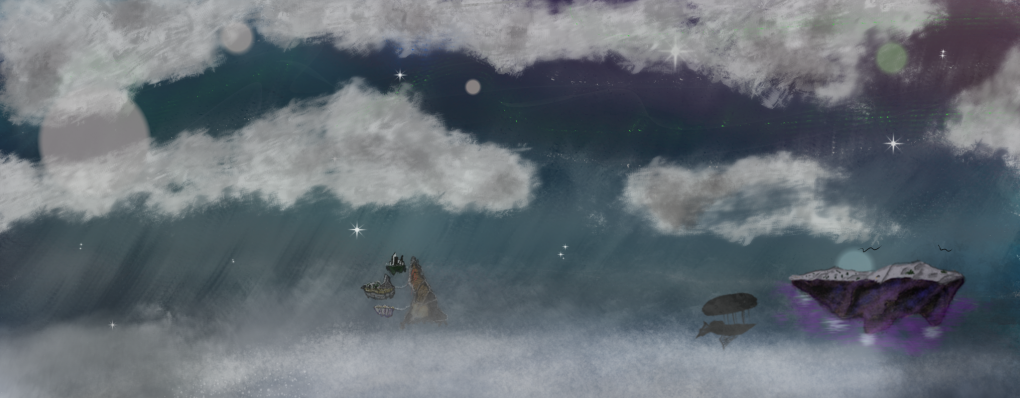Veil
The Veil is a dazzling band of cosmic rings comprised of crystal shards, bifrostium dust, and many other extraordinary materials. These elements combine to create, a volatile field of fire, lightning, falling meteors, and supercharged sunlight. And this combination of effects is responsible for the frantic and chaotic cycles of growth and destruction experienced in the forests below.
In fargone eras the world was thought to be shaped like a flat disc or a dome. It was theorized that as one traveled outwards from the abyss (in the direction we now know to be north) one would eventually reach the perimeter of the world, and meet certain doom. The latter half of this theory remains true, unfortunately, as the Mist Frontier is no easier to traverse now than it was during those more innocent times.
The Meridialis Effect
Less extreme, though no less important, is the impact of this suncrystal amplification matrix on the rest of Gahla's southern hemisphere. The Meridialis Effect thesis posits that without the amplified sunlight that reflects off of the Veil and flows longitudinally through the leylines known as the Levinlights, an ayrland's plants would be left woefully unable to generate enough energy for its reefjets to defy the planet's gravitational pull. This is why ayrlands fly at their highest altitude during the midsommer solstice, when the sun rests on the southern side of the Veil, and lowest during the vernal solstice, when the Veil interferes with sunlight's path and refracts it. As for the equinoxes, these are the seasons when the Meridialis Effect is most sharply focused directly on the Kalyptian jungles themselves. At the equator, this leads to an odd mix of increased mist levels and higher chances of wildfires (though that might be attributed to the dragons fighting for the most coveted basking spots).A thorough study of the Meridialis Effect reveals that sunlight's interaction with the Veil is also the cause for the chromatic variations seen in Gahlan skies throughout the year. It is why the same clear sky appears an eggshell blue during Rise, a vibrant royal blue during Bloom, a muted teal during Fall, and a nearly desaturated shade of slate during Pale. The palette shift lasts throughout the twilight and into the night. Compare the hues found in Bloom's blood-red sunsets to the gloomy maroon shades of Pale's, or Rise's sorbet sunrises against Fall's renditions, which appear rich and brown like a breakfast syrup. Do not limit yourself to black for nighttime scenes, for there are as many ways to express darkness as there are emotions in the human heart.

